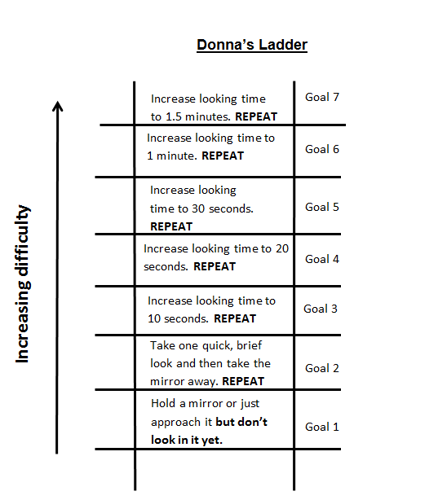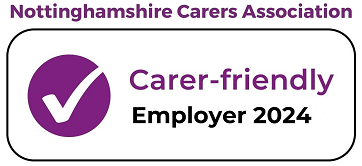Body Image
Living with a diagnosis of cancer and the impact of cancer treatments like chemotherapy, radiotherapy and surgery may affect your self-esteem, confidence and how you think about yourself.
We know that the way see yourself (and your body) can impact on how you communicate with other people in terms of what you say and in your body language (e.g., avoiding eye contact).
You may also worry that people will look at you differently, or change how they interact with you. You may be feeling uncertain about how to relate to other people now.
Concerns about body image or bodily changes for people with cancer can happen at any time. For some it happens straight away (e.g., after consenting to having a mastectomy), whereas others won’t think about it until much later (e.g., after treatment has finished).
The moment of realising that you look different can interrupt what had been a smooth process of recovery.
Common self-critical thoughts related to body image may include:
- I am ugly
- I am fat
- I am unlovable
- I am not a woman/man anymore
- Others think I am weak
- Others see me as “ill”
- People will stare and ask me questions about my appearance/condition
Further thoughts or questions you may ask yourself include:
- How will I cope without my looks?
- What is my life going to be like?
- How will I interact with others?
- Will others reject me?
- Why me?
- Why am I thinking like this? I should be grateful to be alive
What impact does a change in body image have upon daily life?
Worries about body image are commonly experienced by patients at any stage of their cancer journey. Changes to how the body functions, looks, and feels are often dependent upon the type of cancer and the course of treatment.
Physical changes to the body may include hair loss, losing body parts, scarring, changes in speech, skin deterioration, weight gain/loss, tiredness, weakness and nausea. Changes to body image may also impact upon emotional wellbeing. For example, you may feel:
- Denial – you may find it difficult to accept your new look, which may stop you from interacting with others/going out in public.
- Anxious/scared – you may feel nervous at the prospect of going anywhere or fearful of what you imagine might happen e.g. people staring at you, asking you questions, drawing attention to you.
- Depressed – you may lose motivation for life and become disconnected from yourself, others and the environment around you.
These feelings are common reactions to changes in body image. You may even consider unhelpful ways of coping e.g. become dependent on family, using alcohol or drugs to dampen down difficult emotions (such as anxiety about going out) or withdrawing from others completely. Please see the example below.
Example:
Donna was diagnosed with head and neck cancer. She had surgery and chemo-radiotherapy. She was left with scars on her neck and face, and avoided looking in the mirror or interacting with other people because she felt anxious about how they would react. Sometimes she caught a glimpse of the reflection of her face in a window, which triggered negative thoughts and feelings.
It is understandable that people may start to behave in different ways to cope with issues related to body image. These behaviours may have short term benefits (such as reducing anxiety) but are likely to keep anxiety going in the long term:
- Avoiding public places and interactions with people
- Fearing intimate relationships
- Being overly self-conscious or quickly embarrassed
- Wearing certain clothes to cover up
- Becoming aggressive or irritable
In addition, in the long term, they can lead to missing out on the things that used to be fun and rewarding in life.
What Can help?
Learning how to cope with anxieties around your body image can help to rebuild your confidence, self-esteem and identity.
Facing your fears
Slowly exposing yourself to the feared situation (e.g., meeting new people) in a safe way can help manage symptoms of anxiety. Facing your fears (with support from family or clinicians) would enable you to reduce unhelpful behaviour (e.g., avoidance) and to manage negative thoughts that you may hold about your body image.
Remember that it is not what you experience, but how you interpret the situation which determines how you live your life.
You can start by creating a list of activities or situations that would make you feel anxious. Then, order them from the least worrying to the most worrying. It can be useful to imagine the situations or activities like small steps up the rungs on a ladder. Each rung represents a small and realistic goal to achieve. The goals should be SMART:
Specific – think about what will help you achieve it
Measurable – something easy to identify when you have achieved it
Achievable – something that you believe you can try to attain
Realistic – something that you feel ready to deal with
Timely – something that you have enough time to achieve
Familiarising yourself with the new look and feel of your body can help you to be more accepting of the changes that have happened. This is often most easily done in a gradual way. See Donna’s ladder below which involved a step-by-step approach to looking at herself in the mirror.

Throughout this experience, Donna used breathing exercises to help manage her feelings of anxiety. She found that achieving her goals on the ladder improved her self-confidence in her appearance.
Remember: Using relaxation exercises as you progress up the ladder is important for helping you to manage any feelings of anxiety or stress along the way. You can access relaxation exercises by clicking HERE
Try to draw your own personal ladder, what would your goals be?
Facing people and their reactions
It is natural for people to look at something that is “different”. Their reactions may be driven by a desire to know what has happened, so that they can reassure themselves that it will not happen to them. Staring or asking questions is sometimes necessary preparation for people before they can interact with you comfortably. However, sometimes it can feel intrusive. Here are some ways in which you can manage it:
Staring – Many people turn away from being stared at. Whilst this might help to manage your anxieties, it may also suggest that you have something unpleasant to hide. You could make eye-to-eye contact, smile and say hello to the person staring, indicating that you are comfortable to look at them and have nothing to hide. You could even start a conversation with them (e.g., about the weather, news, surroundings). In doing so, this might distract their attention away from your appearance. However, it is important for you to judge the situation i.e. knowing when it is appropriate to give eye contact or to start a conversation.
Curiosity – Questions such as “what happened to you?” are common, especially if there are obvious changes to your appearance. You may find it helpful to think about pre-planned answers to this question e.g. “I was diagnosed with cancer and I am having treatment” (firm and vague) or “I have had surgery for cancer, which has now left me with this stoma which is visible to everybody. I’ve got to have lots more surgery” (firm but happy to go into detail). Responding to curiosity allows others to feel less anxious about how to respond. It also opens up conversations that may help you feel comfortable in yourself and could set the foundations for developing new friendships.
Being compassionate to yourself
Being compassionate means caring for yourself just as you would treat a close friend or family member. We know that people who are compassionate towards their imperfections have a more positive body image, and are able to handle setbacks more easily than those who frequently criticise themselves.
Below are some exercises that may help you to become more compassionate towards yourself and help you to manage issues related to body image and other life-stressors.
Building your "inner compassionate self"
- Notice what you are saying to yourself when things don’t go your way. What words are you using when you are being critical? What is the tone of your voice like to yourself? Does the inner voice remind you of somebody in your life who was critical of you?
- Once you are aware of your “inner critic”, try and build a compassionate part of yourself. It may help you to think of what a kind relative or friend might Think about the qualities that the image has. Are they caring? Old? Young? Male? Female? Non-human? Will the image have similar experiences to yourself? What would your compassionate self look like? How would they sound? How would the image relate to you, and how would you relate to them?
- Now, use this image to help reframe the statements voiced by your inner critic. For example, statements such as “I am not attractive anymore” can be transformed using compassionate self-talk e.g. “I may look different now, but I am still loveable”.
- How would you treat a friend? Think about a close friend who feels bad about themselves or holds a negative view of their body image. What advice would you give them? Note down what you might typically say or do in this situation.
- Now, think about the times when you feel bad about yourself or your body image. How do you typically respond to yourself? Note down what you might typically say or do in this situation.
- Did you notice a difference? If so, think about how things might change if you responded to yourself like you do to your close friend.
Self-compassion journal
- Keeping a journal is a helpful way to express your emotions. Note down anything that you have felt bad about (e.g., feeling unattractive, argument with a relative etc), what you said to yourself and how it made you feel at that time.
- Whilst writing your journal, try and be accepting and non-judgemental of your experience. Acknowledge that everybody has painful experiences at times.
- Use words of compassion to care for yourself e.g. tell yourself “it is okay to feel like this”, “suffering is part of life” or “I am going through a difficult time right now”.
Using guided practice to develop your compasionate self
- Please click on the audio clips below for guided exercises to develop your compassionate self. You can also download the scripts for the audio clips HERE.
Further self-compassion audio clips can be found by clicking HERE (Compassionate Mind Foundation, 2015)








